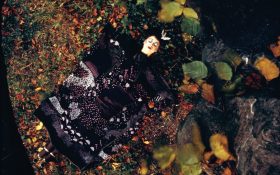The demise of BritArt has been a rumbling topic of conversation for some time now, but when Momart – a warehouse stocking millions of pounds worth of art – went spectacularly up in flames at the end of May it ignited a particularly British media frenzy. Arts Hub UK writer Marian McCarthy looks at the new way ahead for British art and talks to one of its new faces – Faye Briony whose first solo exhibition ‘The Trial of Tartuffe’ is part of what is starting to be known as ‘Slow Art’.
Open season has been declared on Saatchi and most Young British Artists. As Jacques Peretti from The Guardian quipped: ‘If anyone was in any doubt that BritArt was over, they couldn’t have had a less subtle sign from God.’ And so the pendulum has swung. Whatever you think about the movement largely responsible for putting contemporary British art on the map, it is clear that the zeitgeist has moved on.




